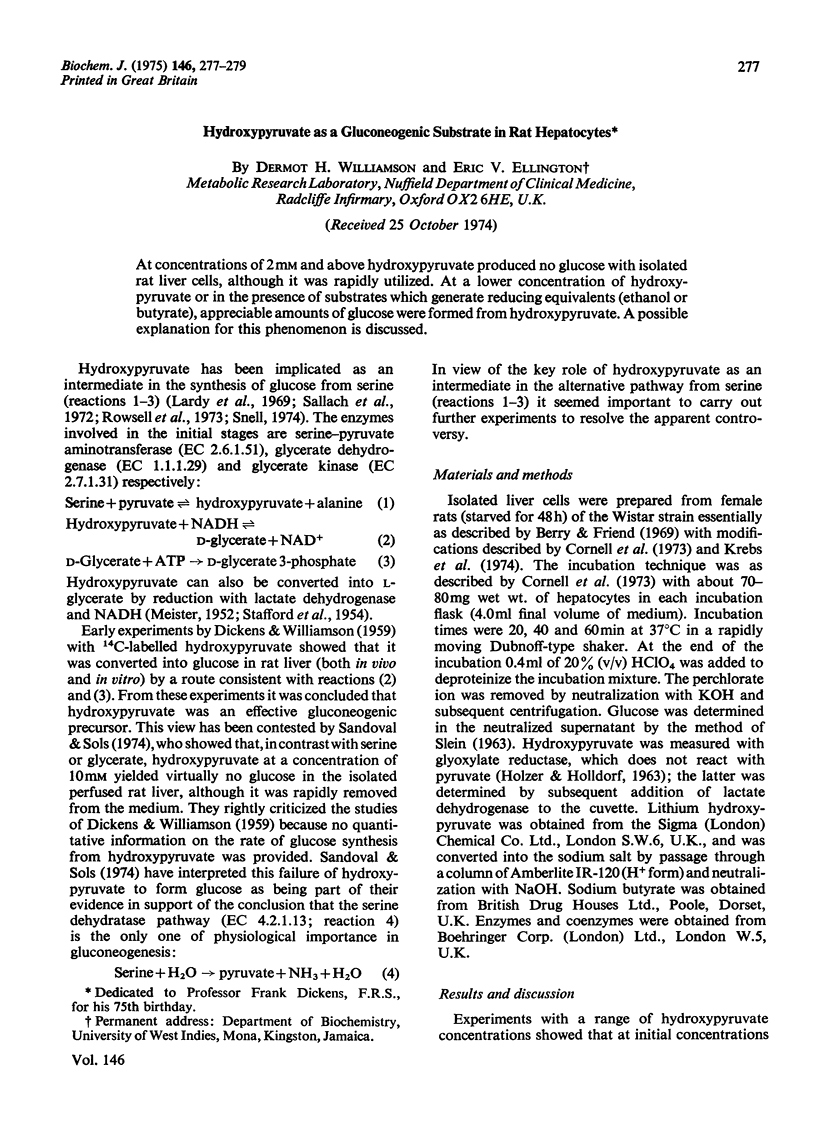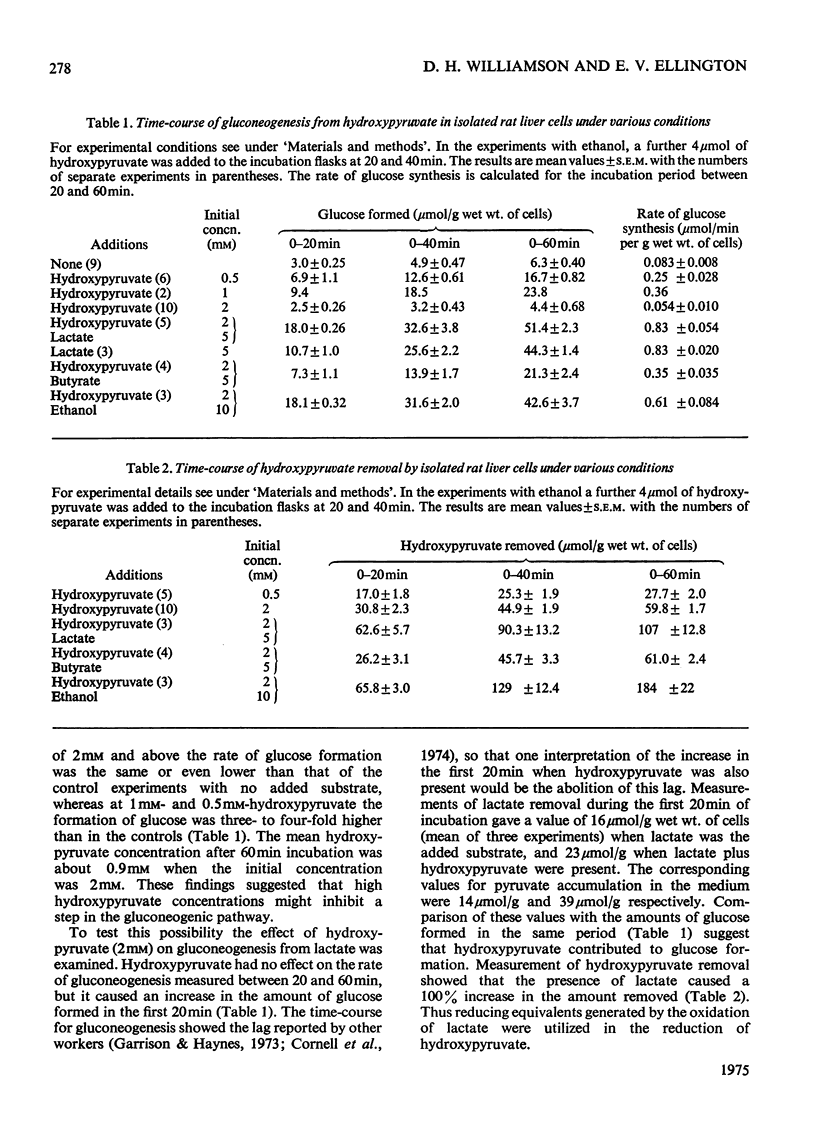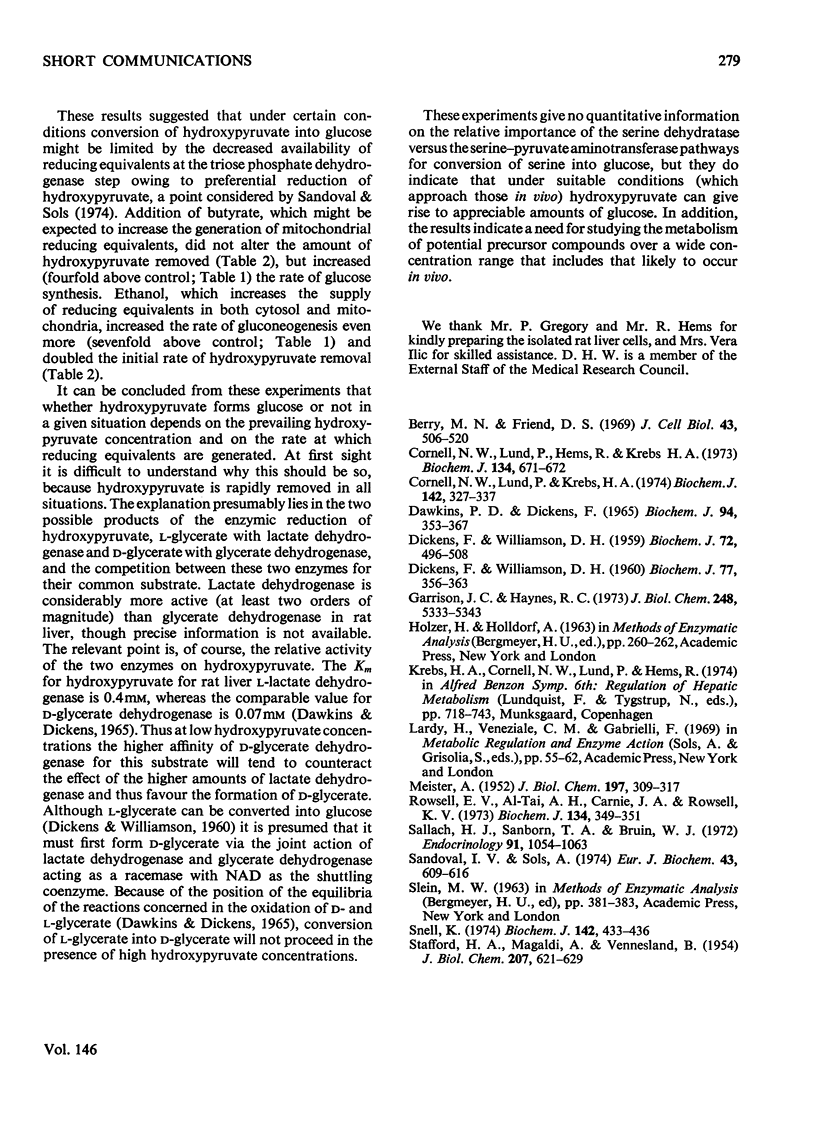Abstract
At concentrations of 2mM and above hydroxypyruvate produced no glucose with isolated rat liver cells, although it was rapidly utilized. At a lower concentration of hydroxypyruvate or in the presence of substrates which generate reducing equivalents (ethanol or butyrate), appreciable amounts of glucose were formed from hydroxypyruvate. A possible explanation for this phenomenon is discussed.
Full text
PDF


Selected References
These references are in PubMed. This may not be the complete list of references from this article.
- Berry M. N., Friend D. S. High-yield preparation of isolated rat liver parenchymal cells: a biochemical and fine structural study. J Cell Biol. 1969 Dec;43(3):506–520. doi: 10.1083/jcb.43.3.506. [DOI] [PMC free article] [PubMed] [Google Scholar]
- Cornell N. W., Lund P., Hems R., Krebs H. A. Acceleration of gluconeogenesis from lactate by lysine (Short Communication). Biochem J. 1973 Jun;134(2):671–672. doi: 10.1042/bj1340671. [DOI] [PMC free article] [PubMed] [Google Scholar]
- Cornell N. W., Lund P., Krebs H. A. The effect of lysine on gluconeogenesis from lactate in rat hepatocytes. Biochem J. 1974 Aug;142(2):327–337. doi: 10.1042/bj1420327. [DOI] [PMC free article] [PubMed] [Google Scholar]
- DAWKINS P. D., DICKENS F. THE OXIDATION OF D- AND L-GLYCERATE BY RAT LIVER. Biochem J. 1965 Feb;94:353–367. doi: 10.1042/bj0940353. [DOI] [PMC free article] [PubMed] [Google Scholar]
- DICKENS F., WILLIAMSON D. H. Metabolism of D- and L-[3-14C]glycerate by liver tissue of the rat. Biochem J. 1960 Nov;77:356–363. doi: 10.1042/bj0770356. [DOI] [PMC free article] [PubMed] [Google Scholar]
- DICKENS F., WILLIAMSON D. H. Studies on the metabolism of hydroxypyruvate in animal tissues. Biochem J. 1959 Jul;72:496–508. doi: 10.1042/bj0720496. [DOI] [PMC free article] [PubMed] [Google Scholar]
- Garrison J. C., Haynes R. C., Jr Hormonal control of glycogenolysis and gluconeogenesis in isolated rat liver cells. J Biol Chem. 1973 Aug 10;248(15):5333–5343. [PubMed] [Google Scholar]
- MEISTER A. Enzymatic preparation of alpha-keto acids. J Biol Chem. 1952 May;197(1):309–317. [PubMed] [Google Scholar]
- Rowsell E. V., al-Tai A. H., Carnie J. A. Increased liver L-serine-pyruvate aminotransferase activity under gluconeogenic conditions. Biochem J. 1973 May;134(1):349–351. doi: 10.1042/bj1340349. [DOI] [PMC free article] [PubMed] [Google Scholar]
- STAFFORD H. A., MAGALDI A., VENNESLAND B. The enzymatic reduction of hydroxypyruvic acid to D-glyceric acid in higher plants. J Biol Chem. 1954 Apr;207(2):621–629. [PubMed] [Google Scholar]
- Sallach H. J., Sanborn T. A., Bruin W. J. Dietary and hormonal regulation of hepatic biosynthetic and catabolic enzymes of serine metabolism in rats. Endocrinology. 1972 Oct;91(4):1054–1063. doi: 10.1210/endo-91-4-1054. [DOI] [PubMed] [Google Scholar]
- Sandoval I. V., Sols A. Gluconeogenesis from serine by the serine-dehydratase-dependent pathway in rat liver. Eur J Biochem. 1974 Apr 16;43(3):609–616. doi: 10.1111/j.1432-1033.1974.tb03448.x. [DOI] [PubMed] [Google Scholar]
- Snell K. Pathways of gluconeogenesis from L-serine in the neonatal rat. Biochem J. 1974 Aug;142(2):433–436. doi: 10.1042/bj1420433. [DOI] [PMC free article] [PubMed] [Google Scholar]


